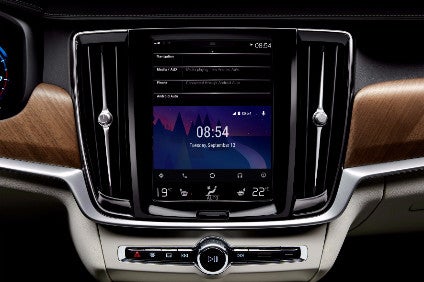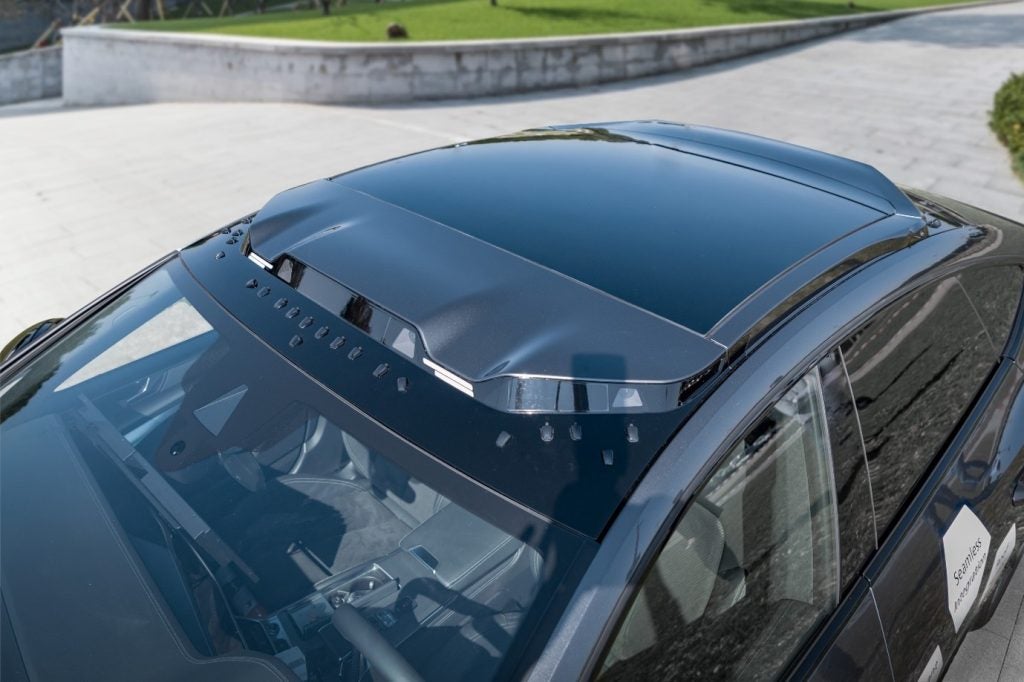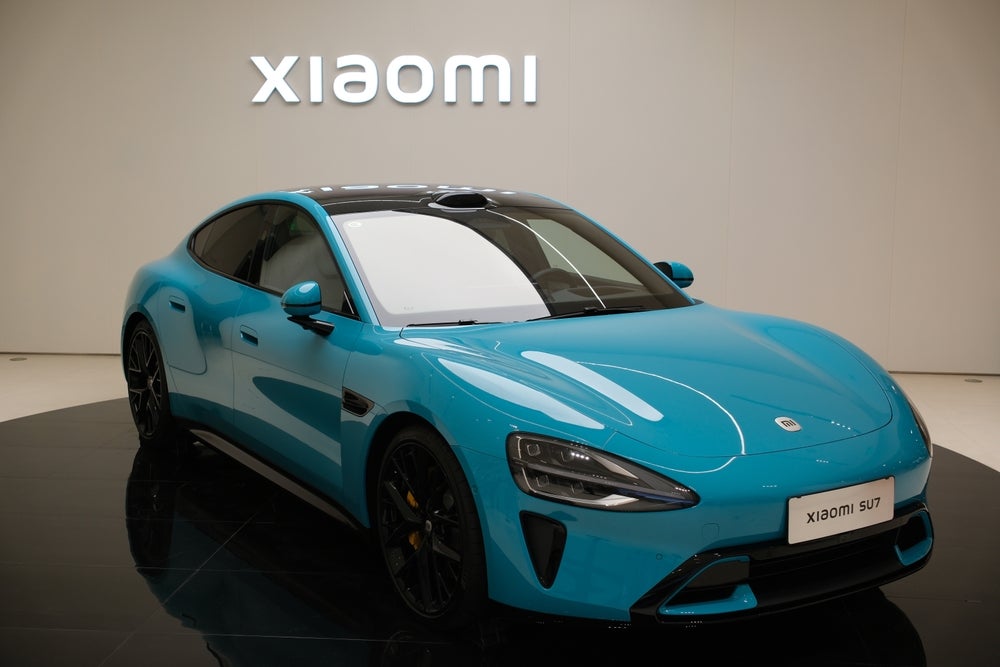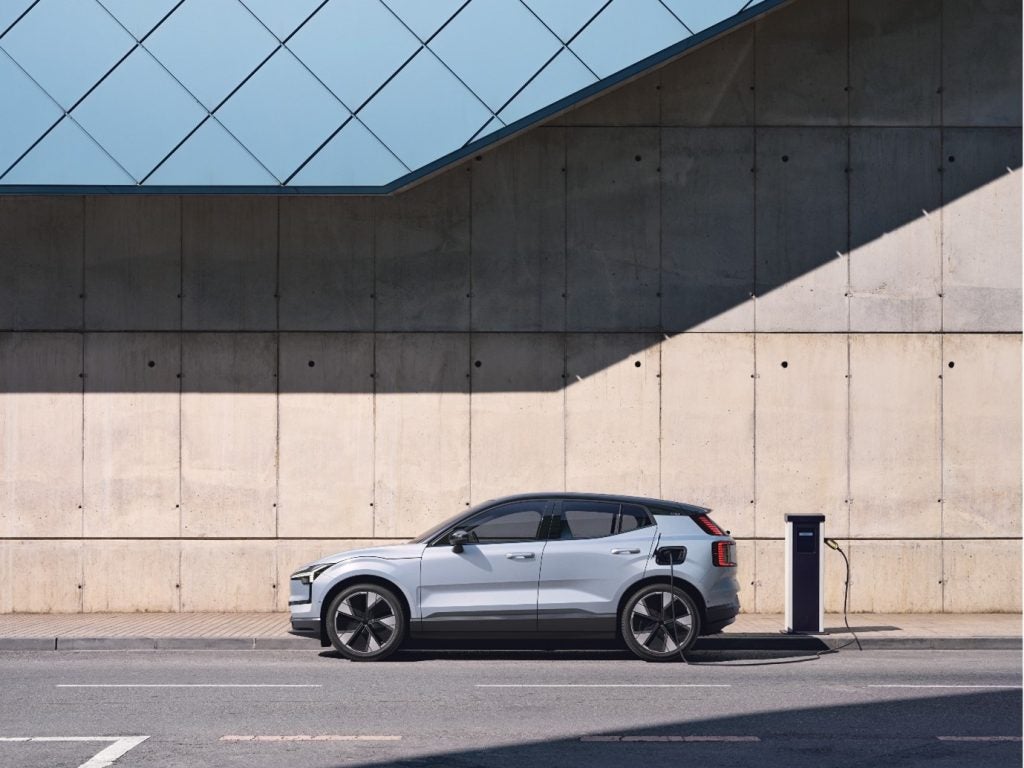
Welcome to the first in our newest reporting series*. Our Hands-On Tech, or HOT, Reports take you through the top-spec connectivity features offered by manufacturers in detail and look to benchmark the functionality based on various test criteria. First to be tested, the award-winning Volvo Sensus system, as currently featured in the XC90, XC60 and brand-new XC40, Volvo’s first compact SUV.
Display
The HMI of the Sensus system is the largest on the market, after Tesla’s controversial 17″ display. At 9″, the display has been configured to ensure all four main functions are available to the driver at all times. Each function—audio, telephony, navigation or media—can be expanded at the touch of the capacitive screen. The display offers pinch and zoom and swipe gestures to move between pages, even when wearing leather or wool gloves.
The 8″ integrated cluster instrumentation which can be upgraded to 12.3″ offers more line-of-sight connected control. Navigation, voice control translation—where the system repeats back in words what it thinks it has heard—can be seen on this wider screen. At first the steering controls seem overly comprehensive. However, the combination of mouse-like scroll wheels and console-esque arrows makes navigating the menu options easy enough, once the driver is more familiar. There is also a Heads-Up Display (HUD) on offer. Above the steering wheel, a small projector shows the speed limit, your speed and key navigation instructions in the windscreen.
Voice Control
Working with Nuance, Volvo has developed voice control system, which we rated 4 out of 5 for syntax and 3 out of 4 for accuracy, where 5 works 100% of the time and 1 indicates poor functionality. From over 200 natural-sounding phrases, including variants such as ‘I’m hot’ and ‘Reduce temperature’ for same command, the system was very accurate in its understanding. In fact, this system works well most of the time. Volvo has helpfully integrated a list of commands that can be used in the digital manual within the Sensus system. Use of these specific commands is key to getting the best out of the system, though the computer does become more familiar with how you say the expressions over time.
The system did not recognise ‘Navigate to Oxford Services’, though ‘Navigate to Oxford’ was understood once we’d adopted a faux-British RP accent (Editor: author has a Northern accent). The voice-controlled telephony tests were more successful. Volvo customers have the choice to configure contacts ‘first name, surname’ or vice versa. Whichever you select, using same format makes, as you would expect, the voice control more accurate. Although the system coped fine with Western names, such as Hannah and James, it struggled with more unusual names, such as ‘Mikalajunas’, a Lithuanian surname—where the ‘J’ sounds ‘Y’ and at one point ‘Ed Wiseman’ became ‘Call a Wifey’, which the Telegraph writer will surely be amused to hear.
Whatever the system thinks it has heard, it offers that sentence visually on the cockpit screen, after processing. Though a small detail, this is useful for understanding what the system is hearing and helps the driver learn to get the best out of the voice-recognition feature. Volvo’s system offers a voice response facility, where the response gives options such as ‘Please select from the list, or say Cancel’, which helps with ease of use.
How well do you really know your competitors?
Access the most comprehensive Company Profiles on the market, powered by GlobalData. Save hours of research. Gain competitive edge.

Thank you!
Your download email will arrive shortly
Not ready to buy yet? Download a free sample
We are confident about the unique quality of our Company Profiles. However, we want you to make the most beneficial decision for your business, so we offer a free sample that you can download by submitting the below form
By GlobalDataSwitchgear
Of the ten areas of main traditional switchgear, including climate control, clock and seat warming, the Volvo system is now 35% digital. Safety features such as hazard lights and front and rear screen heat remain physical, as does the CD control and glovebox access. However, in the future, we expect to see more of these features become digitally controlled.
Volvo has made some progress into ‘Connected Switchgear’, defined as controls that give customers more functionality that you’d expect to see on a mobile, tablet or desktop. Screen brightness, factory reset and language selections are now a full integrated part of the package. However, Sensus doesn’t yet offer privacy preferences, cabin overheat control (for pet comfort) or as comprehensive ADAS customisation, a la Tesla.
Networking
A modem is currently offered on five of the thirteen models in the range, but Volvo expects to have full connectivity integrated into 100% of the range by 2020. The SIM is not integrated but an optional upgrade. Unlike many other manufacturers, Volvo does not offer data contracts itself. Instead, the customer sources a data package, perhaps from their current mobile provider and can fit the SIM card very easily via a dock located in the rear of the car. This then allows the customer to upgrade to Volvo OnCall, a emergency breakdown service and smartphone companion app.
Bluetooth connectivity for both telephony and media use is very simple and connected to Android very easily. Connecting to an iPhone was slightly more tasking, but it did eventually connect. However, if the customer upgrades to CarPlay, this wouldn’t be such an issue since the connection is made via USB cable.
Volvo was the first manufacturer to adopt Apple CarPlay. It has since introduced Android Auto to the 90 series. The upgrade, costing £300, includes installation of a second USB port. Other features, such as the WiFi hotspot, supporting up to eight devices, can only be used once the SIM card has been inserted and the modem enabled. This is definitely worth doing. Running Apple CarPlay can munch through data very quickly since Siri does all the talking; reading your messages and sending messages handsfree, enabled through dictation.
The modem can also connect to public and private networks. If you can’t park close enough to your home WiFi, you can use public networks, or tether the car’s system to your mobile, by making a WiFi hotspot of your handset. As all software upgrades are currently only available upon servicing the vehicle, you don’t need to worry about background downloads using up all of your data. Apps will update over-the-air, but Volvo’s system won’t offer OTA updates for vehicle health or core software for at least another six months.
Apps
Volvo has a total of nine applications currently available on its platform. Volvo was the first company to integrate Spotify. Since that time, other manufacturers have followed suit. The transition between the apps is at times clumsy and laggy and not all apps can be voice controlled. Here’s the breakdown of the apps on offer in the XC90:
- Glympse – offers a way of sending family members real-time updates on your journey. Notifications can be sent to pre-populated mobile numbers and are accessed via a link
- HERE Local Search – this handy app shows points of interest near car, en route or near your destination. Though the ability to edit the favourites list is very intuitive, the star ratings are somewhat ambiguous with no user reviews to read about the POIs on offer
- Park & Pay – in this app, you need to have set up an EasyPark or Parkmobile account with your payment details. Once you’ve done that, you can locate parking spaces and pay for however long you stipulate. However, the app requires you to call them to tell them you’ve finished parking, which is a bit clunky. What’s more, there’s no pinch and zoom functionality
- Record&Send – gives you the ability to send a voice message to a pre-populated email address. Though this could be handy for sending yourself reminders, or a family member a note about your journey, it is difficult to understand why it would supersede a phone call or text message
- Spotify – this app requires the driver to have a premium account in order to be able to access the music-streaming library
- TuneIn Radio – offers a global selection of internet radio stations. The user experience was simple and TuneIn was one of the few apps that could be used via voice control, if you knew the name of the station you wished to listen to
- Weather – easy to use, you can toggle from local area to destination in order to make sure you pack the car with the appropriate clothing for your whole journey
- Yelp – this app was surprisingly useful. Similar to HERE Local Search, it offers POI and even has the history and favourites menu too. However, in this case, you can read the latest user reviews of the location you’re browsing.
It’s worth bearing in mind that Volvo is not wholly responsible for the functionality or user experience for third-party apps, but the company does select who to work with. WikiLocation drew the most attention in our test. This app reads out trivia from Wikipages, cross-referenced with your location. The “Grade EyeEye-listed building” description raised an eyebrow. Though humorous, this basic error demonstrates the current shortcomings in this technology.
Audio
Volvo has collaborated with Bowers and Wilkins to offer a premium audio upgrade. It’s not cheap at a eye-watering £3,000 on top of the price of the car. For audiophiles, it’s worth it. The premium audio package enables the driver the simplicity of pre-configured audio preferences, which recreate the listening experience of a studio, smaller stage or auditorium performance at Gothenburg Concert Hall. These are so simple to use, cutting out the need to mess with the treble, mid and bass levels if you’re not familiar with getting the best from these settings manually. The acoustic configuration offers such definition, it is difficult to imagine any customer selecting such a vehicle without opting for this upgrade.
The CD Player is £100 upgrade and conveniently located in the armrest between the driver and passenger, where the USB port(s) and 12V socket can be found. DAB radio is offered, as is AM/FM. A second 12V socket can be found in the rear which with the right accessory will allow customers to increase the number of USB ports in this large family vehicle.
Navigation
Navigation is European, offers lifetime updates and is provided by HERE. The routes offered a slightly inaccurate ETA based on traffic, but there is a choice of routes. The menu nesting means the steps to set destination have been reduced to only six, provided the location is recognised first time.
We’re using ‘Ripley’ in Kent as one of our destination towns. Volvo’s navigation system offers two types of input – touchscreen handwritten and keyboard, which are easily toggled between via a digital button on the left. However, we noticed that inputting ‘Ripley’ on the keyboard initiated drop down menu of options, which predictively populated as we typed each letter (much like Google Search). However, we didn’t get the same result for ‘Ripley’ when entering the town’s name on the handwriting touchscreen. In fact, we had no results at all. Though other towns could be found, it appears that the two inputs don’t seem to call from the same menu at the back end. This is a small issue, that can be easily fixed, however, as Volvo doesn’t offer over-the-air updates, customers would have to wait until their next service to have small issues like this corrected.
When the system doesn’t recognise a town or city in this way, you definitely need a postcode. Cue scrambling for your phone to use Google. What’s more, you must insert the space in a postcode. As a heavy Google user, where even spelling error will be calculated on the fly, this specificity is frustrating. That said, once you are set to go, adding a waypoint via voice control is very simple.
Though the in-built POIs are very comprehensive, offering everything from accommodation, bars and restaurants, to healthcare, shopping, sports and leisure and tourism options, it was a little strange not to find ‘public toilets’ under the public facilities, or anywhere else for that matter. What’s more, with nine sub-categories to select from and further topic areas under them, the menu nesting here was intense.
We rated the Sensus navigation 4 out of 5 for intuitive design, where 4 offers great presentation, minimal nesting and fairly natural user experience.
ADAS
Volvo has a proven track record for implementing safety features first. Functions, such as City Safety, Cross Traffic Alert and Lane Keep Assist function as you would expect, alerting the driver to imminent danger and taking control at the very last moment, if the driver doesn’t.
Advanced Adaptive Cruise Control is comfortable but the SAE level of automation is still only at 2, held back by regulation and Volvo’s continued commitment to safety.
Companion App and Telematics
Volvo On Call is a subscription-based service that allows drivers to report a breakdown, or receive proactive contact in the event of a collision. As it is not always safe to stay in the vehicle, the development of smartphone applications has enabled Volvo to move the physical SOS and OnCall buttons located in the roof control panel to the driver’s handset. Now drivers can leave the car to find a safer location in which to ring the breakdown in. The development of the application has also enabled Volvo to integrate telematic features such as remote locking and vehicle location finder with horn and light alerts.
Settings
There is a vast amount of information within Sensus. The bulk of this information can be circumvented by setting up a driver profile, which can remember your seat position, favourite locations and audio preferences. There is a manual on how to use the whole Sensus system contained within the Settings menu, which also features non-spoken, how-to-use videos.
Conclusion
Volvo has won awards for its highly intuitive infotainment system. The user experience is created through extensive testing, research and customer interviews around the globe. The company is also committed to safety. While in places, the multiple choice on offer—for example, there are three ways to change the temperature in the vehicle—may overwhelm some customers, the lack of standardisation across the industry means car makers are under pressure to offer drivers a user experience integrating all their own personal preferences.
*This article is an extract from a report that first appeared in our Qube service. The QUBE article is accompanied by a comprehensive data sheet with our full evaluation of Volvo’s connectivity and HMI.







